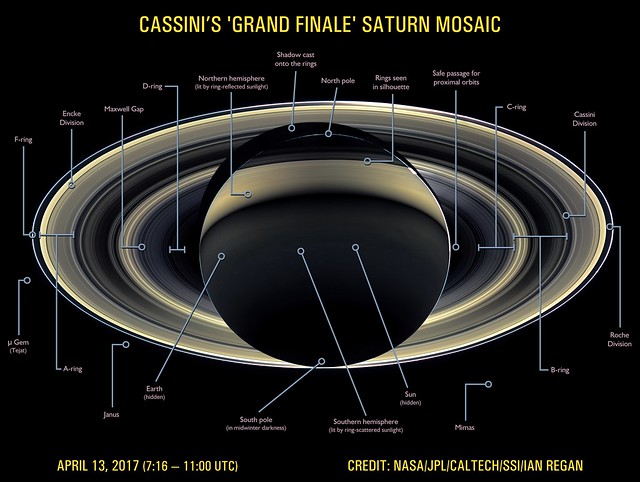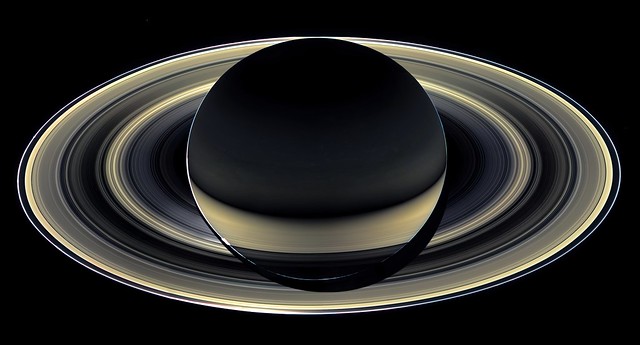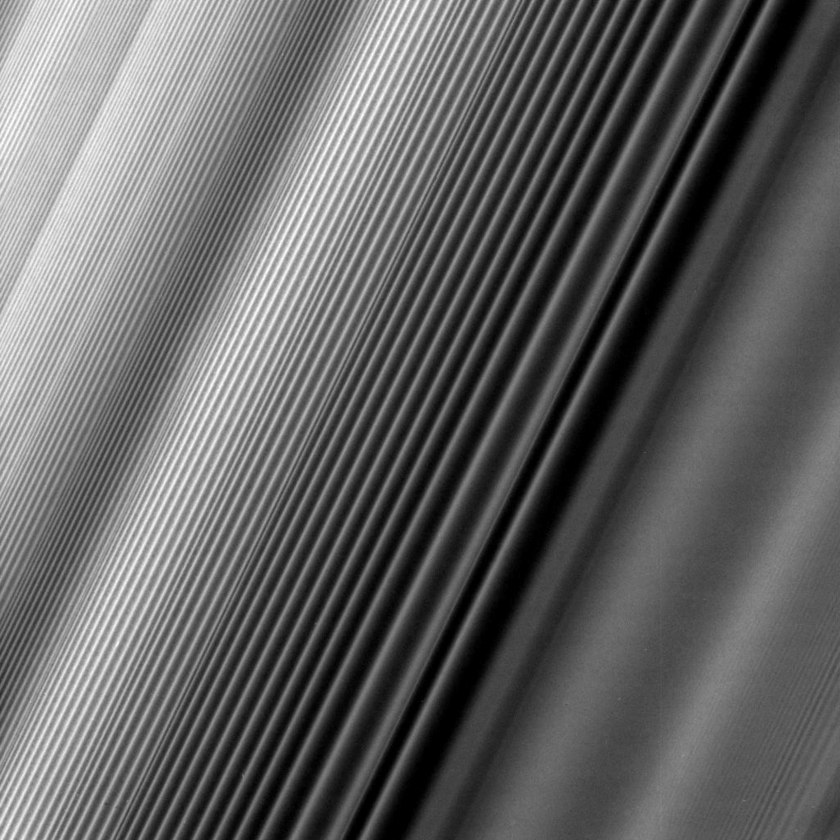The final phase has been described as a mission in itself - one that might have attracted funding if it were stand-alone rather than one planned for the end of an already phenomenally successful enterprise.
We will no doubt continue to get regular updates at ciclops a resource which has been invaluable to followers of the mission, and which have provided a brilliant insight into upcoming science activities during each orbit, since early 2007 (Thanks Jason).
I'm hoping too
To summarise, the F-ring orbits commence on November 30th and comprise 20 orbits of the spacecraft with periapses just a few thousand kilometres outside the F-ring - this will allow the opportunity to image the dynamism of the F-ring as never before, as well as (imaging opportunities willing) our best views of the rings and ring-moons - Atlas, Pan, Daphnis, Pandora, Epimetheus and Janus (Prometheus has already had it's closeup) There may be opportunities to get images of some of the known ring clumps (S/2004/S6 if still extant) and/or the known propellers/clumps in the outer A-ring such as S/2009/S1 and Bleriot/Earhart. The rings are simply gigantic though, and many of the orbits of the ring-embedded moons are chaotic so probably I'm hoping for a bit too much.
From what I can gather, there seems to be less risk with the F-ring orbits than with the proximal orbits as Cassini has sampled this environment to a degree already, and I believe it is intrinsically less dusty than the D-ring, and with relatively low radiation exposure to Cassini.
The 23 proximal orbits commence on 23rd April next year following the penultimate Titan flyby, and will thread between the inner rings and Saturn's cloud tops. This is slated as the opportunity to pin down Saturn's rotation, measure the mass of the rings and obtain unparalleled data on Saturn's atmosphere. This is where the spirits of adventure and exploration reach their zenith, as the environment between the rings and the planet is not fully understood.
The attached article gives an insight into the enormous planning challenges that these orbits present. It's fairly technical, but in summary:
The dust and radiation hazards present unknown risks to not only Cassini's science instruments but also the ability of the spacecraft to maintain it's optimal orientation whilst preventing any safing events.
As I understand it, it's not possible to prevent the glare of Saturn's atmosphere and rings blinding the sun sensor and star trackers, as they are located on the HGA which is facing forward to minimise risk of damage to the science instruments, so it's planned to command Cassini to 'suspend' star identification for 5 hours either side of each periapsis - thus flying blind during the 'hairy' part of the orbit.
Mission controllers also have to deal with the not-fully constrained effects of aeroheating during periapses which may affect the instruments, and there is also a risk of safing due to radiation constrained within Saturn's magnetic field.
The article states that the first proximal orbits will 'test the water' as regards the environment in that region, with periapse being lower on the final five orbits.
It seems that many of the 'safing' protocols/thresholds will be relaxed during periapses, hopefully preventing Cassini entering safe mode - perhaps one of the worst-case scenarios - each orbit at this stage is only seven days, which doesn't allow a huge amount of time to upload new commands should that happen.
I can only marvel at the technical brilliance of people involved in Cassini-Huygens and all they do, and have no doubt the final months of the mission will be a fitting end to this generation's exploration of Saturn.







